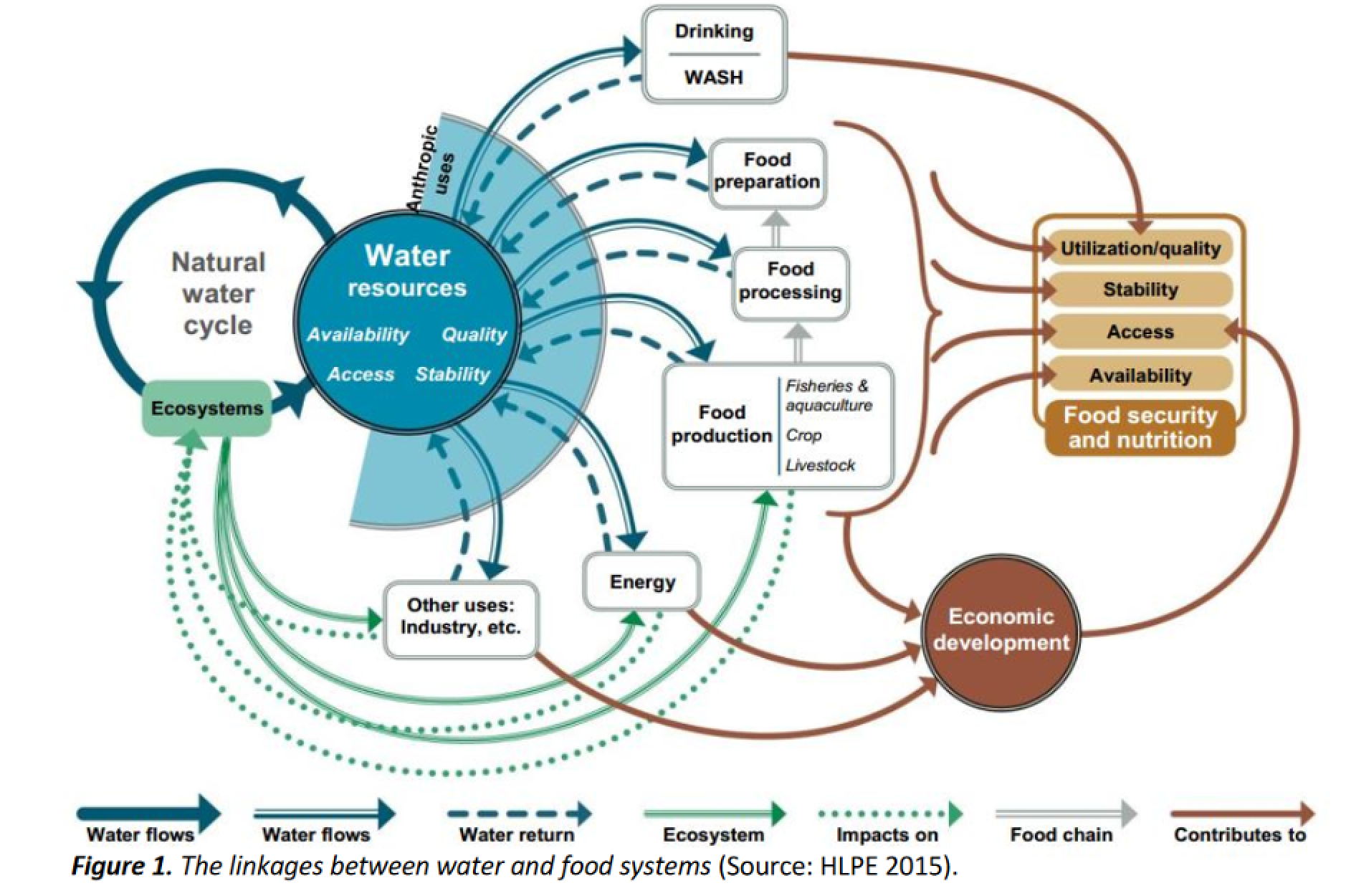Water is integral to food systems and improved food systems are essential to meet Sustainable Development Goal 6 on water and sanitation.
More than 70 percent of all freshwater withdrawals are currently used for agriculture, and about 85 percent of withdrawn resources are consumed in irrigated agricultural production. With these resources, irrigated crop areas generate 40 percent of global food production on less than a third of global harvested area. Another key water-food system linkage is water supply for WASH (water, sanitation and hygiene), which is important for human health, can support nutrition outcomes, particularly if combined with other interventions, and is a basic human right; as is the right to food. Water is also essential for agricultural processing and for food preparation.

Solutions to jointly improve food systems and water security
- Strengthening efforts to retain water-based ecosystems and their functions
In addition to a direct halt to deforestation and destruction of water-based ecosystem, nature-based solutions that use or mimic natural processes to enhance water availability (e.g. groundwater recharge), improve water quality (e.g. riparian buffer strips), and reduce risks associated with water-related disasters and climate change (e.g. floodplain restoration) should be strengthened.
- Improving agricultural water management for better diets for all
Strengthen the climate resilience of rainfed food systems: This can be addressed, to some extent, through structural measures (e.g. terracing, soil bunds), investment in breeding, improved agronomic practices, better incentives (e.g. payments for watershed conservation), and strong institutions (e.g. watershed committees).
Strengthen the nutrient density of irrigated agriculture: The potential for increasing water and nutrition productivity in irrigation remains large. It includes crop breeding for transpiration efficiency, climate resilience and micronutrients, integrated storage solutions, advanced irrigation technology.
Address water pollution to improve food production, food safety, and water-based ecosystems: Key measures to address agricultural and overall water pollution include breeding crops with higher crop nutrient use efficiency, better agronomic practices, the expansion of nature-based solutions for pollution management, low-cost pollution monitoring systems, improved incentive structures for pollution abatement, and continued investment and innovation in wastewater treatment, including approaches such as the 3R (reduce, reuse, and recycle) of the circular economy across the entire food system.
- Reducing water and food losses beyond the farmgate;
Strengthening market linkages includes investment in physical infrastructure that supports on-farm production (irrigation, energy, transportation, pre-and post-harvest storage), efficient trading and exchange (telecommunications, covered markets), value addition (agro-processing and packaging facilities), and improved transportation and bulk storage. Investments are also needed in ICTs that facilitate farmers’ access to localized and tailored information about weather, water consumption, diseases, yield, and input and output prices.
- Coordinating water with nutrition and health interventions;
Strengthen institutional coordination and develop joint programs: Coordination at the lowest appropriate levels is urgently needed between WASH and irrigation for improved food security, nutrition, health outcomes and also to strengthen women’s agency.
Implement nutrition-sensitive agricultural water management: A recent guidance describes eight actions to increase the nutrition sensitivity of water resources management and irrigation as well as indicators for monitoring progress.
- Increasing the environmental sustainability of food systems;
More work is urgently needed on the impact of current dietary trends on environmental resources, including water.
- Explicitly addressing social inequities in water-nutrition linkages;
Vulnerable groups need to be proactively included in the development of water services, including incorporating their needs and constraints into initial infrastructure design.
- Improving data quality and monitoring for water-food system linkages, drawing on innovations in information and communications technology (ICT).
Better data are needed to truly understand the water footprint of diets, and devise policies that co-maximize water and food security and nutrition goals.
| Year of publication | |
| Authors | |
| Geographic coverage | Global |
| Originally published | 01 Jun 2021 |
| Knowledge service | Metadata | Global Food and Nutrition Security | NutritionSustainable Food Systems | Food and nutrition securityFood system |
| Digital Europa Thesaurus (DET) | waterAgriculture |
